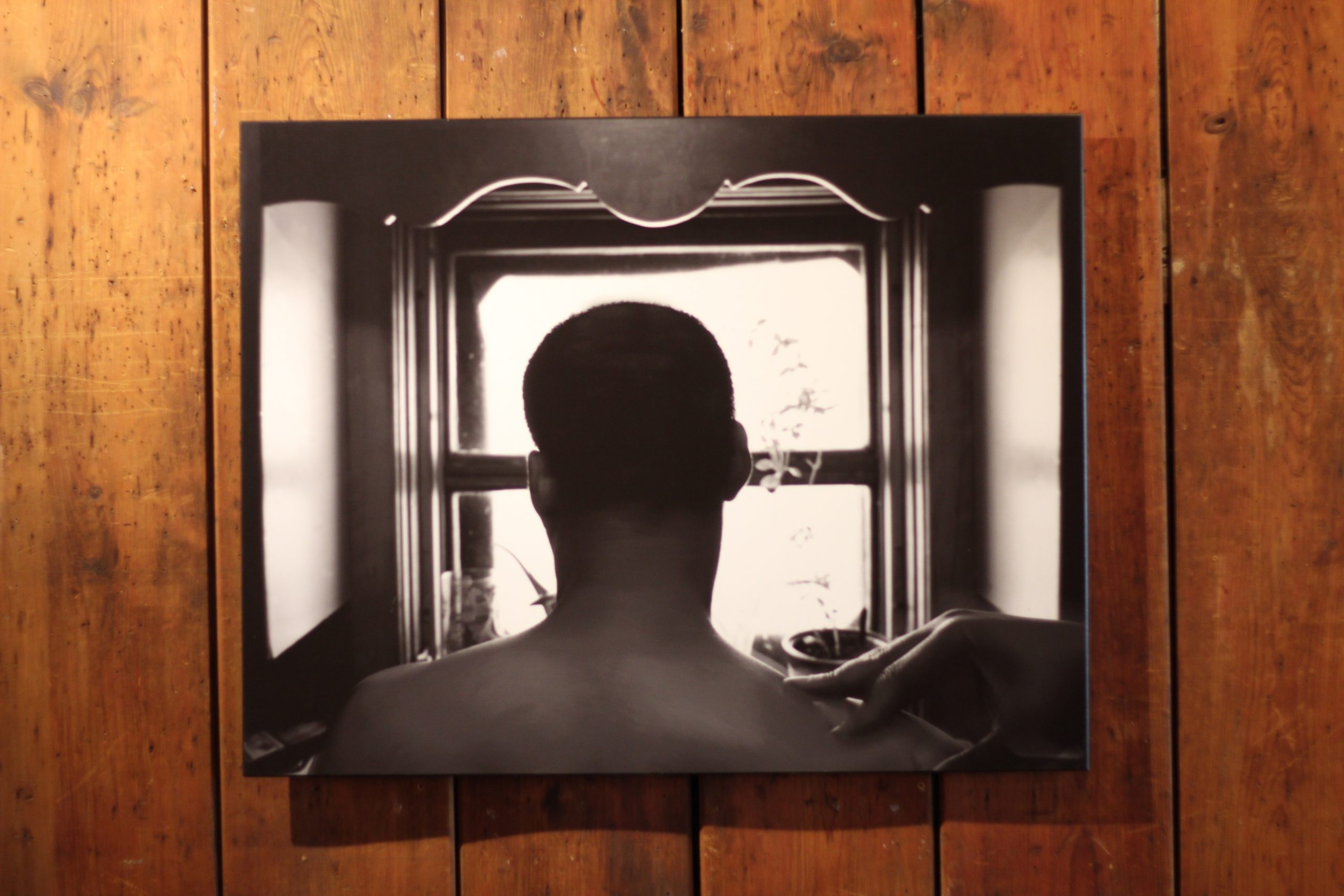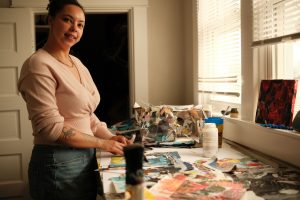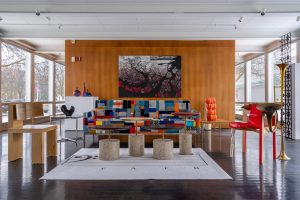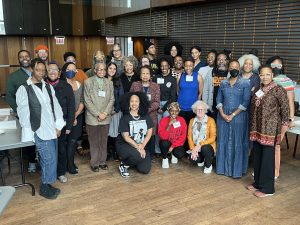Featured Image: Peculiar Sensation, Cecil McDonald, Jr., 2012, Black and white photograph of a shirtless, masculine Black person facing away from the viewer and toward a window, an unknown hand rests firmly on their shoulder. Photo by Kaye Cooksey.
Contemporary art galleries aren’t meant to feel cozy. “White cube” art galleries are monied, privileged spaces that are cold and impersonal. In recent years, diverse voices within the art community have been questioning if that supposed-neutral space that has become the de facto norm truly serves the artists as well as the patrons or if the white cube continues to bolster the inherent elitism in the art world, further distancing the industry from non-wealthy communities. Just Above My Wall (To The Right) at the South Side Community Art Center strips away the pomp, the incidental, and the barriers to entry while presenting a show full of noteworthy artists that’s as welcoming and intimate as the home of a close friend.
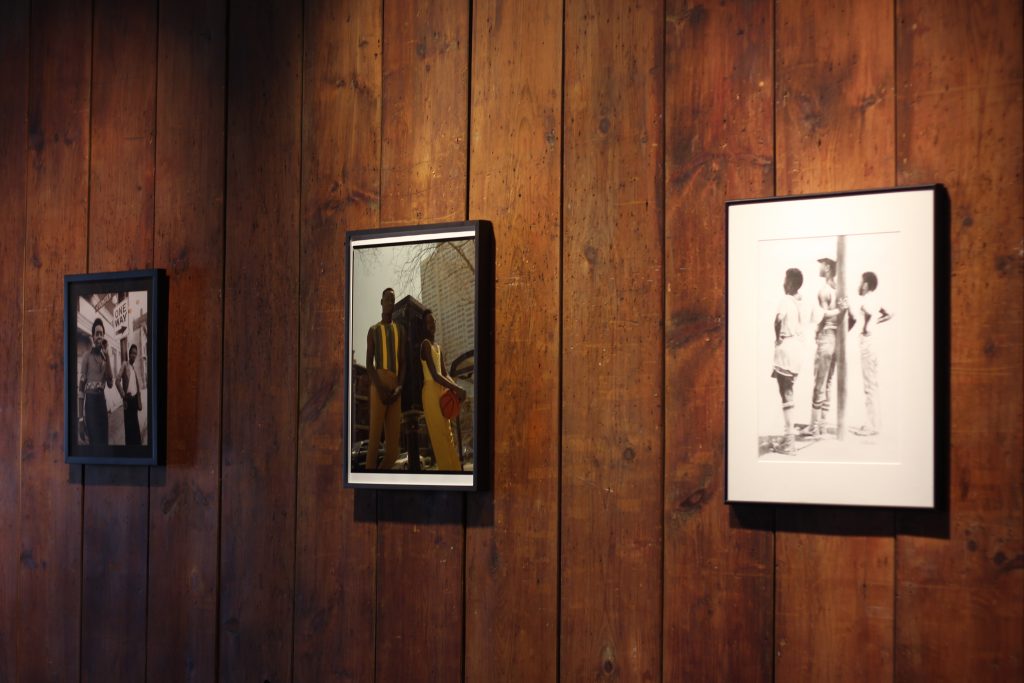
Curated by Ciera Alyse McKissick, the exhibition is a collection of artworks on loan from 13 Black collectors from Chicago alongside pieces from the permanent collection of the South Side Community Art Center. The variety of pieces in the show covers decades of work by Black artists. 20th-century works from the SSCAC collection include Bill Walker, Ralph Arnold, Sylvester Britton, Yaounde Olu, Hale Woodruff, and Dorothy Higgenson-Carter. With the newer pieces, McKissick spotlights “Black collectors who have invested in the preservation of Black art.” Works from these collectors showcase artists Krista Franklin, Hebru Brantley, Brandon Breaux, Alexandra Antoine, Erin Mitchell, and Lawrence Agyei, to name a few. Accompanying the show are insights from the collectors on how they’ve amassed their works. The advice and inspirations from the collectors vary: they mention parents and grandparents, a desire to support the artists in their communities, a love of art, and a commitment to the legacy of Black artists. In an industry that has become hyper-focused on the production of Black artists, it’s refreshing for a show that positions humanity ahead of monetary value.
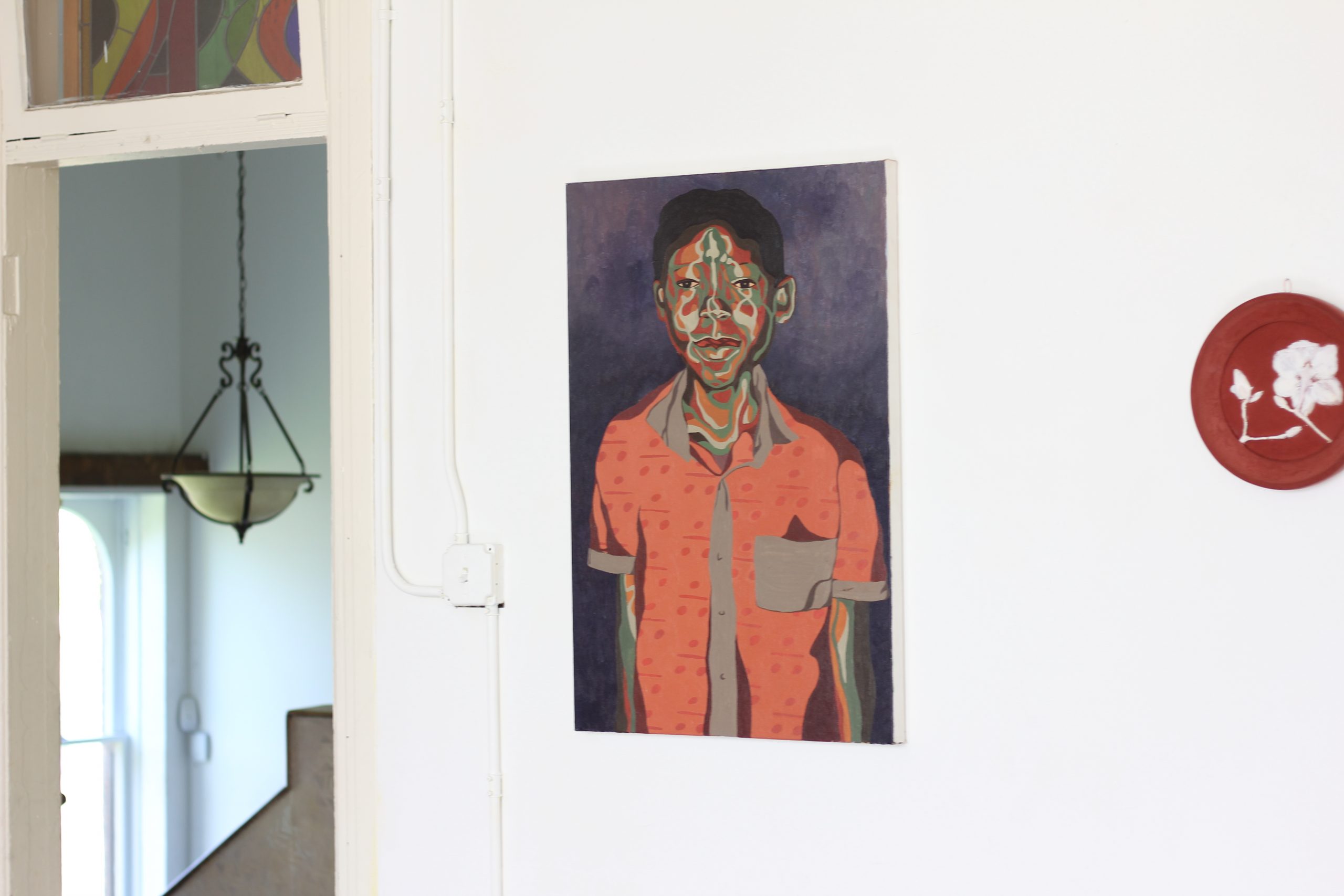
The house museum-style of the South Side Community Art Center venue provides a unique context for viewing art that’s a welcomed change from the usual sterile gallery atmosphere. SSCAC resides in the iconic former home of artist, poet, and writer Dr. Margaret Burroughs on Michigan Avenue. The large Chicago-style house was commissioned in 1892 by George A. Seaverns, Jr. and designed by architect Gustav Hallberg. The galleries that host the current exhibition were renovated in the 1960s and haven’t been changed since, which imbues the show with a certain charm that isn’t achieved in other gallery spaces. The first gallery is a dark brown, completely wood-paneled room with tall windows, a piano, and a fireplace. The second, upstairs gallery has all-white walls, with brown beams overhead and hardwood floors. Both galleries are rooms that feel lived in–the entire building is a space with a narrative. A history that goes back decades pulsates from the walls and breathes life into the show.

When I first entered the lobby, I felt a specific familiarity like I was pursuing the perfectly curated parlor room of an older and beloved relative. With the gallery formalities stripped away, we’re left with a beautiful home decorated with beautiful works of art. The pieces take on a different meaning; instead of objects of value, they are objects of beauty, with the specific purpose of beautifying this space. I enjoyed all of the work in the show, but I was particularly struck by a photograph on the second floor: a small black and white image by Roy Lewis of three dancers called The Lively Ones (Darlene Blackburn). It was hung over a radiator that was painted white—I got a chuckle out of that. I’ve had many a similar radiator in just about all of my apartments in Chicago. The photo hanging there over the radiator felt so normal, so familiar. It looked like an image from a family barbeque, not a coveted piece of art from a collection. It felt so personal that I was almost expecting someone to look over my shoulder and say “Ah, yeah that’s your great auntie back when she was a dancer!”
In the discussions of the art world, it’s often lost on us how deeply personal the act of viewing and acquiring art actually is. We’re dazzled by headlines featuring big names and nearly incomprehensible amounts of money. It obscures the reality that in its purest form, buying art is about beautifying our intimate spaces and private moments. Our homes are so sacred. It’s the place we go to feel safe, where we are our full selves. How we decorate that space is a reflection of our innermost personalities. Just Above My Wall (To The Right) reminds us of the value of collecting art not purely as an investment but as an expression of self. In a way, we’re all collectors, with our homes as the galleries.
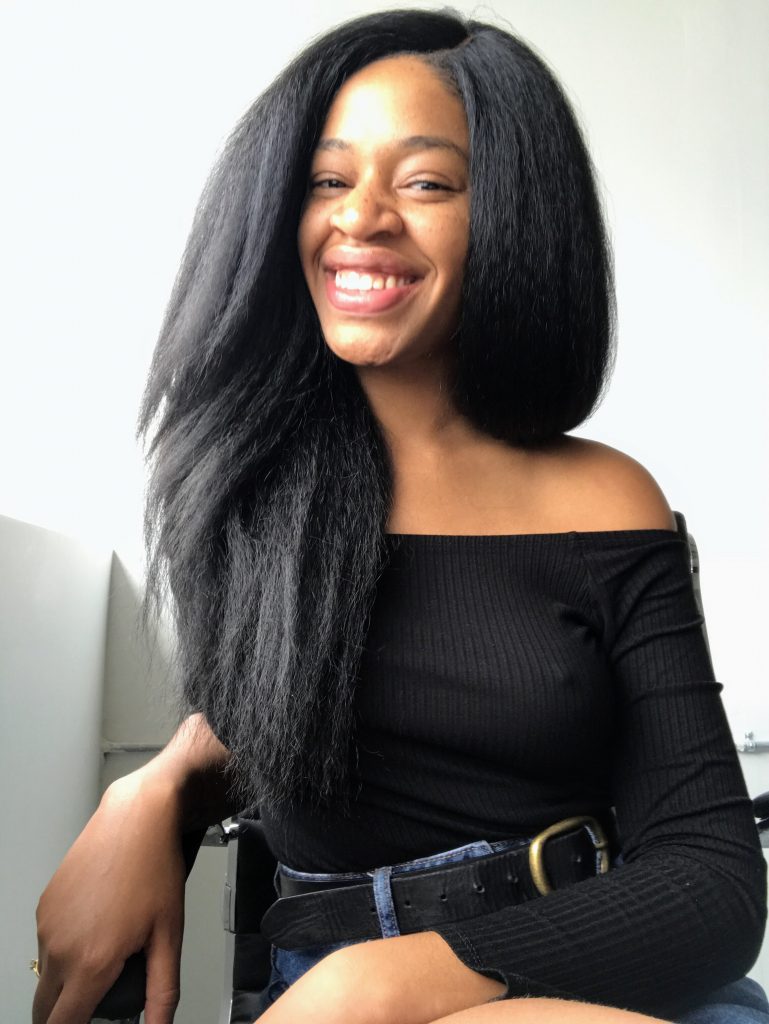
Jen Torwudzo-Stroh is an arts and culture professional and freelance writer based in Chicago, IL.
